26 – 28 May 2014: Little Bay, Montserrat – 16 48N 62 12W
When will it end? We keep looking at the charts convincing ourselves that our season long bash to windward must finally be over. But no, it seems to continue, we desperately wait for the day we will ease sheets, even just an inch would give us hope!
In company with Truant 3 we sailed 40 miles to cover the 32 mile trip from Charlestown on St Kitts down to Little Harbour at the top of Montserrat, another trip hard on the wind. We tried to do it in one tack but kept getting pushed westward, the winds were steady in the high teens but the sea state was hideous as the mighty Atlantic butts up with the Caribbean Sea - and we doubled as a submarine for long into the trip south east, another major dousing of salt. On the up side the anchorage was calm enough, we had been warned it could be very rolly so as least something was on our side.
We have a 1994 Lonely Planet Guide to the Eastern Caribbean on board which has provided us with some rather interesting and entertaining reading when we compare it to the latest edition. But no other island has changed as much in the intervening years as Montserrat.
In 1994 they had almost recovered from Hurricane Hugo which made a direct hit on the island in 1989, 11 people died and 90% of the population were left homeless. Villages had been rebuilt and settled, plants and crops were growing again, life was returning to normal. 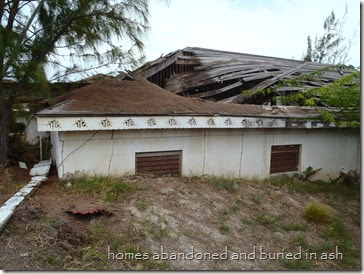
And Then The Volcano Blew
The course of this little sleepy Caribbean islands history changed forever in July 1995 when the Soufriere Hills Volcano came back to life after 400 years dormancy. Over the following years the volcano blew several times, resulting in 19 deaths, and nearly half the island was evacuated, much of it buried, including the picturesque and historical capital of Plymouth.
To this day a large part of the island remains uninhabitable, the northern part – untouched by the eruptions – is fertile and lush and all the Montserratians now live in this area. The volcano continues to smoke and rumble.
A Countryside Buried
We did a day tour with Joe Phillips, a very well informed guide. As there are still large exclusion zones we didn’t get too close to the hot spots, probably for the best or I might not be here to write this!! We stopped at a site where pipes have been drilled over 3 kilometres into the earths core, they are acting as pressure relief values and are letting off plenty of steam to try and stabilise the volatile inner core
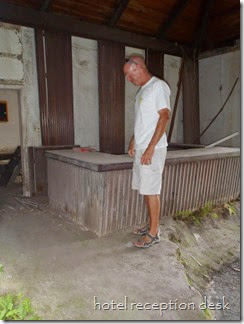 We visited the partly buried remains of one of the pre eruption hotels, set high above Plymouth it once afforded a wonderful view up to the volcano, across the township and down to the ocean. It sat safely high above the flow of ash down the mountainside but still is deeply buried in ash cloud fall out. These days the view is haunting, a scary reminder of the fury of Mother Nature when she feels the need to blow her top and let off some steam!
We visited the partly buried remains of one of the pre eruption hotels, set high above Plymouth it once afforded a wonderful view up to the volcano, across the township and down to the ocean. It sat safely high above the flow of ash down the mountainside but still is deeply buried in ash cloud fall out. These days the view is haunting, a scary reminder of the fury of Mother Nature when she feels the need to blow her top and let off some steam!
Below shows the view from the hotel pool area, pre and post eruption. The pre eruption photo on the left was on our guides iPad so there is glare on it, but it gives an indication on how the countryside has been changed. The one of the right is almost from the same spot, use the swimming pool ladder as a reference point – the pool is full of ash with weeds now growing in it. The huge flow that buried Plymouth shows quite clearly in the background behind the pool, there are abandoned houses close by, then just ash.
The people of Montserrat are carrying on, living their lives in the knowledge that further eruptions will occur but that by settling in the north of the island they should be safe from harms way. Of course there is no escape from the path of a hurricane, its all a roll of the dice.
The Devastating Path To The Sea
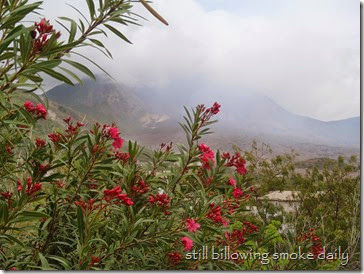
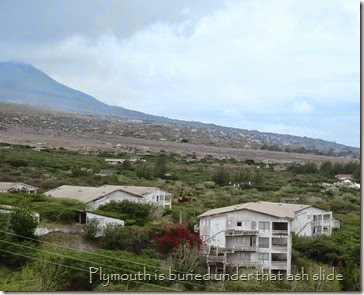
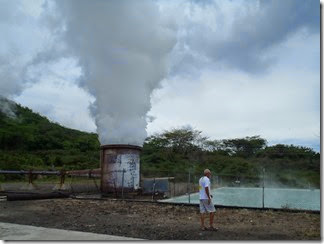
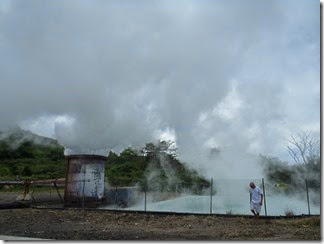
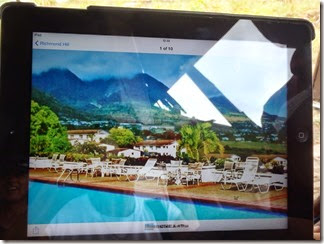
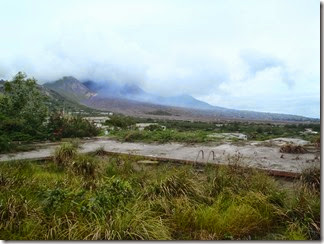

No comments:
Post a Comment